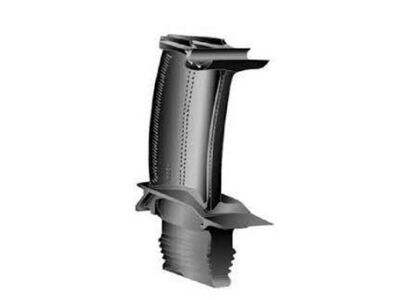The Race to Make the Best Turbine Blades
Have you ever looked up at a plane in the sky and thought to yourself, how in the heck does that thing stay up there? The turbine blade are one of the most critical areas on an aircraft. These unique blades are powered by the engine and work together to propel the plane forward. High-Pressure Turbine Blades: How Are They Made?
How Turbine Blades are Made the Hard Way?
Creating an windmill turbine blades are not the cup of tea. It is a complicated process with much skill and precision involved. Engineers first plan the size of the blades with special computer programs. Skilled workers then machine out the blades from tough metals like titanium or nickel alloys. From there, the blades head for the first "heat treatment" which increases their strength further. Each blade is then individually checked to ensure it meets the highest quality.
High-pressure Environment materials and manufacturing Techniques
An aircraft engine has some of the most hostile conditions for turbine blades to operate within. That is why they are constructed from heat and pressure-resistant materials. These turbine blade designs are specifically selected for being strong and lasting materials. The most common finish of any knife is to have the blades finished into their final shape with casting and forging. This ensures every blade has enough strength to withstand the high pressures from flight.
Turbine Blade Manufacturing and the Role of Quality Control
This fact is important since quality control in the production of turbine blades paramount. A small defect in a blade could result in the crash of an airplane. This is the reason that companies such as O.B.T go into so much detail when it comes to procedures of quality control. Boasting meticulous quality control at every point of the manufacturing process, each blade needs to meet strict criteria before distribution. This turbine blades involves the implementation of intense testing practices and inspection procedures at a micro level to find any defects before they are installed in an engine.
Turbine Blade Technology for Efficiency & Durability Improvements
With the advancement in technology, it leads to the development of turbine blade technology as well. New innovations are continually being developed to improve the efficiency and service life of turbine blades by engineers and scientists One more interesting progress is related to advanced coatings for the protection of the blades. The latter will allow the blades to remain in place longer and ultimately work better over high pressure environments. Intricate designs that were once impractical to realize are now possible via the use of 3D printing as well. It was also through these breakthroughs that turbine blades are becoming more robust and efficient compared to anything before.
To sum it all up, in regards to maintaining aircrafts that can fly safer and more efficiently turbine blades are key. The manufacture of these blades is a complex process involving planned approach in manufacturing and stringent quality control. Companies like O.B.T are really pushing the envelope by using the latest and the most efficient tech to craft stronger, more efficient and performance oriented blades. So the next time you point to a plane in the sky, just think about that genius work of engineering it took to get up there at all.
 EN
EN
 AR
AR
 BG
BG
 HR
HR
 CS
CS
 DA
DA
 NL
NL
 FI
FI
 FR
FR
 DE
DE
 EL
EL
 HI
HI
 IT
IT
 JA
JA
 KO
KO
 NO
NO
 PL
PL
 PT
PT
 RO
RO
 RU
RU
 ES
ES
 SV
SV
 TL
TL
 IW
IW
 LV
LV
 LT
LT
 SR
SR
 SK
SK
 SL
SL
 UK
UK
 VI
VI
 ET
ET
 HU
HU
 TH
TH
 TR
TR
 AF
AF
 MS
MS
 GA
GA
 IS
IS

